- Home
- Herbie Brennan
Through the Wardrobe Page 6
Through the Wardrobe Read online
Page 6
Logline: It’s About All Having Universal Peace Forever
When they finally reach the end of the world, the explorers in Dawn Treader encounter a great wave that stays in place. One of the mythical islands of the North Atlantic, Hy-Brazil, was called “The Land Under the Wave”; its placid nature suggests the complete majesty over the earth that Aslan exhibits in his realm. In order to return home, Eustace and his cousins encounter Aslan (in the form of a lamb) and cross a river to get back to England. Here one might be tempted to think about the river Styx. But Lewis has other ideas in mind. From Revelations:Then the angel showed me the river of life-giving water. . . . On either side of the river grew the tree of life.
A river was said to bisect the legendary island of Hy-Brazil, which European explorers at the time recognized as St. Brendan’s “Paradise.” With paradise on both sides, Eustace and Lucy are going to be fine whether in our world or in Narnia.
The Voyage of the Dawn Treader shows us that there’s a lot of good in useless fantasy books, in case you actually do end up in a magical world. If you know about Midas, about St. Brendan, about not getting fooled by strange voices, and about always, always not touching things, you should do very well. If you don’t, you’re going to be screwed. Everybody understands this, even Aslan, who asks Lucy, when she accidentally makes him invisible, “Do you think I wouldn’t obey my own rules?”
And Eustace, far from just being a good Christian, is by the end of the book a mythology expert. When Reepicheep suggests tying King Caspian to the mast, he says, “Like they did with Ulysses when he wanted to go near the Sirens.”
That’s reading the right books.
Ned Vizzini is the author of three acclaimed young adult books: It’s Kind of a Funny Story (now a major motion picture from Focus Features), Be More Chill, and Teen Angst? Naaah . . . Ned speaks to students and teachers at schools, universities, and libraries about writing and mental health. He also reviews books for The New York Times and L Magazine. He lives in Brooklyn and Los Angeles. His work has been translated into seven languages.
Of course you know the spiritual messages of Narnia. Of course you realize the Great Lion Aslan is a metaphor for Christ. But suppose you missed all that the first time you read the books . . . and maybe even the second? Well, join the club. Sarah Beth Durst is here to say you’re not the only one—and more to the point, it doesn’t matter.
Missing the Point
SARAH BETH DURST
Remember Bambi? Cute deer. Cute bunny. Cute skunk. Very scary forest fire. Very traumatic death of Bambi’s mother. . . . Yeah, I don’t actually remember that last part. Seriously, when I saw Bambi, I didn’t realize that his mother died. I thought that Bambi’s parents were simply divorced and now it was time for his dad to have custody. Later, I was the kid in high school English who argued that Robert Frost’s “Stopping by Woods on a Snowy Evening” wasn’t about suicide. I thought it was a very nice poem about a pretty New England forest like the one behind my house, which was quite lovely, dark, and deep. So as you might imagine, I was also the kid who totally missed all the religious symbolism in the Narnia books.
But I still loved the books.
Why? Why do these books hold such sway over the hearts and imagination of the thousands of people like me who simply didn’t notice the pervasive and often overt Christian references that are at the heart of the novels? Why are they still meaningful to people who completely missed the point?
The Cat’s Meow
Let me first say that the religious references are absolutely there. No question. If you don’t believe me, just Google C. S. Lewis. Go on. I’ll wait.
See? Very religious man.
Just like I’m 99.9 percent sure that Disney meant for Bambi’s mother to (euphemistically speaking) meet God, I’m also 99.9 percent sure that C. S. Lewis meant for the Lion Aslan to (allegorically speaking) be God.
But does the reader need to realize that to appreciate the books?
C. S. Lewis ensures that Aslan is a powerful presence in all seven Narnia books. He’s often the story catalyst and/or the story conclusion. In The Lion, the Witch and the Wardrobe he sacrifices himself to save Edmund (thus ensuring that the prophecy of the four thrones in Cair Paravel can be fulfilled), he breaks the spell on the stone victims of the Witch (thus ensuring that Peter’s army has the necessary reinforcements), and he kills the Witch (thus ensuring that the Witch is, um, killed). In The Horse and His Boy, he appears as various lions (and once as a cat) to help Shasta and Aravis on their journey. He drives them together, metes out punishment, and then protects them from harm. In The Silver Chair, he instructs Jill Pole on how to find the lost prince. In The Last Battle, he banishes the demon Tash and then calls for the end of the world.
But it’s not just what Aslan does that makes him a strong figure. He has a presence even when he isn’t present. When Mr. Beaver mentions Aslan for the first time in The Lion, the Witch and the Wardrobe, the Pevensies all have an immediate visceral reaction. “At the name of Aslan each one of the children felt something jump in its inside. Edmund felt a sensation of mysterious horror. Peter felt suddenly brave and adventurous. Susan felt as if some delicious smell or some delightful strain of music had just floated by her. And Lucy got the feeling you have when you wake up in the morning and realize that it is the beginning of the holidays or the beginning of summer.” C. S. Lewis conveys Aslan’s power and importance in the response of every character to him. Even if you have never heard the phrase “king of kings” before, you understand what it means here. You understand what it means for Aslan to be a Lion-with-a-capital-L. You can see Aslan’s awesomeness in both senses of the word purely through the context of the stories. Lewis gives you enough clues that you can be clueless and still get his meaning—you can grasp his concept of God (Lion-with-a-capital-L) without ever realizing he’s actually talking about God.
Decorating Your Evil Lair
But what about characters who aren’t exact parallels to their theological counterparts? How does the clueless reader understand them?
For example, there’s no obvious Satan in the book. We don’t have a fallen angel or cloven-footed red guy. There’s no fire or brimstone. Instead we have snow and ice. We have Jadis, the White Witch, the last Queen of Charn.
If Aslan is God, then it’s not a big leap to say that the White Witch is Satan. But since the first allegory went whoosh over my head and since I wasn’t very good at leaping anyway (seriously, some kids are late walkers, but I was a late jumper—as a toddler, I’d toss my arms in the air, stick out my belly, and shout “jump,” and my feet wouldn’t leave the floor), I missed any Satan/Lucifer/ devil references with the White Witch. I did, though, find her a highly effective villain, even without any awareness of the allegory. In other words, I didn’t need to know that she was a stand-in for Satan in order to appreciate the depths of her villainy.
The Magician’s Nephew tells the backstory of the White Witch. Two humans, Digory (who later becomes the Professor in The Lion, the Witch and the Wardrobe) and his neighbor Polly, find her in an enchanted sleep on a lifeless planet. Digory wakes her, and the Witch recounts how she single-handedly decimated her world, deliberately destroying every single life form on it (except for herself), because she couldn’t be queen.
Yeah, she has a few issues.
In The Lion, the Witch and the Wardrobe, the White Witch shines as a deliciously evil villain. With her magic wand, she turns her enemies into stone statues. Her castle is chock-full of them. We see them with Edmund as he enters the courtyard: “They all looked so strange standing there perfectly life-like and also perfectly still, in the bright cold moonlight, that it was eerie work crossing the courtyard.” Talk about an awesome evil lair. She decorates it with her enemies.
Think too of how chillingly cruel she is in the Stone Table scene. She isn’t content to simply kill Aslan. She orders his mane to be shaved off so that her followers can mock him before he dies. She also has a shiver-worthy final line
before she strikes the killing blow: “Understand that you have given me Narnia forever, you have lost your own life and you have not saved his. In that knowledge, despair and die.” Ouch.
The White Witch doesn’t need to be seen as a direct parallel to Satan to be understood as evil. C. S. Lewis is able to establish her as a source of evil through her actions and through others’ reactions to her. In fact, he sets her up as the Bad Guy before we even meet her by showing us Faun Tumnus’s fear of her.
Dear Faun Tumnus! This nervous, noble, sweet Faun is one of the most memorable characters in the Narnia books. Or at least, he certainly sticks in my mind, filling space that would otherwise be taken up by 1980s song lyrics. (I admit I have a soft spot for Faun Tumnus. We have a lamppost out in front of our house, and I always call it the Faun Tumnus Lamppost.) In the novels, we first see him mincing toward us through the snow on his goat hooves. “He was only a little taller than Lucy herself and he carried over his head an umbrella, white with snow. . . . He had a strange, but pleasant little face, with a short pointed beard and curly hair, and out of the hair there stuck two horns, one on each side of his forehead.” When he sees Lucy, he drops all the packages he’s carrying and says, “Goodness gracious me!” (A side note: this always cracks me up because I picture Fauns and Satyrs as the rednecks of mythology. They’re traditionally known more for drunken debauchery than good manners, but Faun Tumnus is so perfectly prissy.) Because he’s such an appealing character (and the first Narnian we meet), he is responsible for determining the readers’ allegiance. Tumnus tells us who the good guys are and shapes our view of the White Witch. As Lucy later summarizes, “She isn’t a real queen at all. . . . She’s a horrible witch, the White Witch. Everyone—all the wood people—hate her. She has made an enchantment over the whole country so that it is always winter here and never Christmas.” If we’d met the White Witch first, we might have been like Edmund and been ensnared by her Turkish Delight. But we get to know dear Faun Tumnus first, and when we see what happens to him because of his kindness to Lucy, we have a personal stake in wanting to see the Witch defeated. We don’t need to be rooting for Aslan to defeat the Witch for the sake of any allegory, no matter how deep or deftly drawn; we’re already rooting for Aslan for the sake of Tumnus. In other words, we don’t need any references outside the story itself to understand and appreciate the dichotomy between Aslan and the Witch. We don’t need to see them as God and Satan to understand their roles. It’s all already in there.
Not Obi-Wan Kenobi
Let’s talk for a minute about the Witch and Aslan’s big show-stopping moment. (Suddenly, I’m picturing a big song and dance routine with the Witch, Aslan, and the Beavers performing Rockette kicks. . . . Oh, that is so very wrong.) Of course I mean the moment of Aslan’s sacrifice in The Lion, the Witch and the Wardrobe.
Aslan allows himself to be killed by the White Witch as payment for Edmund’s treachery. Because he is a willing sacrifice, Aslan is then resurrected, thanks to a deeper magic than the Witch knows. This is the scene most often mentioned as an obvious allegory to the Crucifixion and Resurrection of Jesus Christ.
Of course, the first thousand times I read The Lion, the Witch and the Wardrobe, I failed to notice any allegory. Wait, that’s not true—I did notice a parallel between Aslan’s death and Obi-Wan Kenobi’s death in Star Wars. Obi-Wan warns Darth Vader, “If you strike me down, I shall become more powerful than you could possibly imagine.” Same sort of thing happens with Aslan, except he doesn’t warn the Witch. But given that C. S. Lewis most likely didn’t watch Star Wars before writing the Narnia books, I’m betting that George Lucas was not his source material. At any rate, I missed the (very clear and real) Crucifixion references.
But I didn’t miss the horror of the scene when all the nightmarish creatures mock Aslan as the Witch raises the stone knife. I didn’t miss the sweet sadness of the mice who gnaw away the ropes after the Witch and her followers leave. And I didn’t miss the glory of Aslan’s return or the joy of the romp through the morning. I know that I cried the first time I read the Stone Table scene, not knowing that Aslan was coming back. I cried for the horrible waste, I cried for Lucy’s loss, and I cried for Narnia. It didn’t matter that I hadn’t noticed the allegory. I was inside the story, and it touched me.
I believe that is what a good book should do: sweep you inside the story so that the characters’ joys and losses become your joys and losses. Everything else (moral, theme, allegory) is secondary. This is not to say that they are unimportant. Not at all! The Christian references in the Narnia books (and in the Stone Table scene in particular) add depth, richness, and resonance. But I believe that it’s the ability of the story to succeed on its own that gives a novel its staying power. I experienced the Stone Table scene as the sacrifice of Aslan, the great Lion-with-a-capital-L that I loved. If I’d been cognizant of the allegory as I read, I would have been too busy drawing parallels to fully experience the scene. I would have been too distant from the story to have cried—and the novel wouldn’t have stayed in my heart for as long as it has.
It’s the End of the World as We Know It (and I Feel Fine)
As a counterexample, there were two Narnia books that did not stay in my heart. (Sorry, C. S. Lewis!) In two of the books, the allegory does overwhelm the story—and as a consequence, the books lack staying power.
The Last Battle is a direct reference to Revelations. Um, I should put in a disclaimer here. If you haven’t noticed yet, I’m not exactly a biblical scholar—for a large part of my childhood, I thought Christmas was Santa Claus’s birthday—so I’m going to steer clear of details in the interest of not sounding like a total idiot. (As a general rule, I prefer to avoid looking like a complete idiot whenever possible. It’s one of my daily goals.) But I think it’s safe to say that the final Narnia book is Revelations. I mean, the world ends. “With a thrill of wonder (and there was some terror in it too) they all suddenly realized what was happening. The spreading blackness was not a cloud at all: it was simply emptiness. The black part of the sky was the part in which there were no stars left. All the stars were falling: Aslan had called them home.” And then the sun explodes. Unlike with the death of Bambi’s mother, there isn’t really any way to misconstrue the fact that virtually every single character from all seven books is now dead. For readers as dense as I am, Aslan even says flat-out: “There was a real railway accident. Your father and mother and all of you are—as you used to call it in the Shadowlands—dead. The term is over: the holidays have begun. The dream is ended: this is the morning.”
This is not handled with any degree of subtlety. Sun exploding = not subtle. So unlike with Bambi’s mother, I did not miss the basic plot points. But I did forget it. When I returned to re-read The Last Battle for this essay, I discovered I had zero memory of this rather dramatic and lengthy scene. It had failed to take root in my imagination in the same way that the equally biblical Stone Table scene did.
I also had similar problems with The Voyage of the Dawn Treader. I did at least remember this book, but it never held the place in my heart that some of the other Narnia books do. I think Lewis got so caught up in the message of this book (the allegorical spiritual journey) that he forgot to ensure that the adventure (the actual physical journey) made sense. In this novel, King Caspian is sailing away from Narnia on a quest for seven men and the edge of the world—Aslan’s Country. Why? I understand the need to find the missing men. I even understand the desire to explore to the edge of the world. But why does Caspian go? Wasn’t there someone else he could send? I mean, he’s got a kingdom to run. Yes, he left a good regent, but he’s the king! Look at what happened to England when King Richard went poncing off to the Crusades—things got so bad there that the people needed Robin Hood—a vigilante—to protect them. (And while this led to the fabulous Disney movie with Robin Hood as a fox, it also led to Kevin Costner’s film. Why risk that with Narnia?) Why does Caspian want to reach Aslan’s Country himself, especially when reaching it
means never returning to Narnia? I think this is just plain irresponsible of him. Even Caspian’s own people point out his selfishness. Reepicheep says, “You are the King of Narnia. You break faith with all your subjects, and especially with Trumpkin, if you do not return. You shall not please yourself with adventures as if you were a private person.”
Reepicheep, the warrior Mouse, does go on and never returns to Narnia, which also doesn’t make a whole lot of sense to me. Why is this great hero depriving Narnia of his strength and bravery before he’s old? If I’m reading the allegory correctly, Aslan’s Country is Heaven. Why is Reepicheep, the bravest creature in all Narnia, committing suicide? And why does the heroic King Caspian want so desperately to join him?
If I were more familiar with the texts and tenets of Christianity, would I appreciate these two books more? Would I understand better why Caspian and Reepicheep want to find Aslan’s Country? Would I see the death and destruction in The Last Battle as a happy ending? (Did I mention that they all die?) Maybe I would, and maybe I have just poked very large holes in my thesis here (oops). But I think that if the reader needs to access outside knowledge to understand a story, then the story loses power. Regardless of what the message is and regardless of its import, the act of thinking about something outside of the story disrupts the flow of the narrative. So by focusing too much on message, Lewis actually weakens that message’s impact.

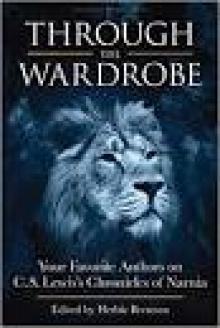 Through the Wardrobe
Through the Wardrobe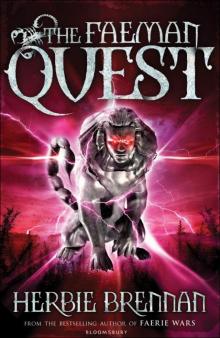 The Faeman Quest fw-5
The Faeman Quest fw-5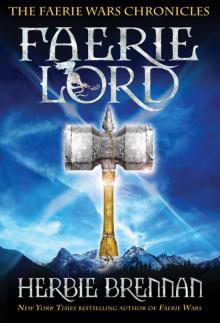 Faerie Lord
Faerie Lord Madame de Gaulle's Penis
Madame de Gaulle's Penis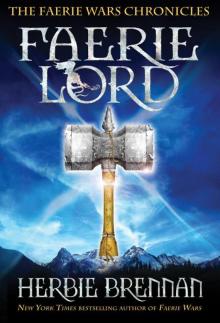 Faerie Lord fw-4
Faerie Lord fw-4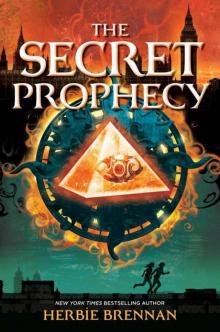 The Secret Prophecy
The Secret Prophecy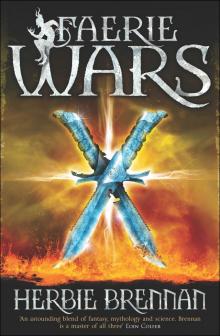 Faerie Wars
Faerie Wars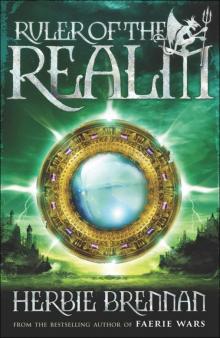 Ruler of the Realm
Ruler of the Realm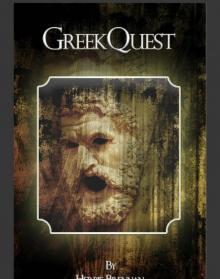 GreekQuest
GreekQuest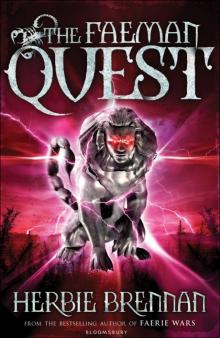 The Faeman Quest
The Faeman Quest The Purple Emperor
The Purple Emperor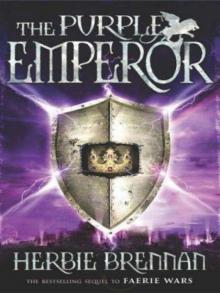 The Purple Emperor fw-2
The Purple Emperor fw-2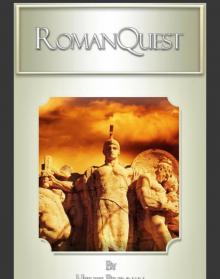 RomanQuest
RomanQuest The Doomsday Box
The Doomsday Box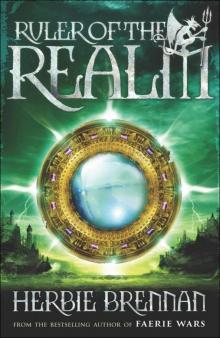 Ruler of the Realm fw-3
Ruler of the Realm fw-3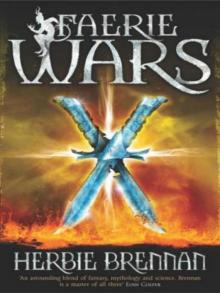 Faerie Wars fw-1
Faerie Wars fw-1